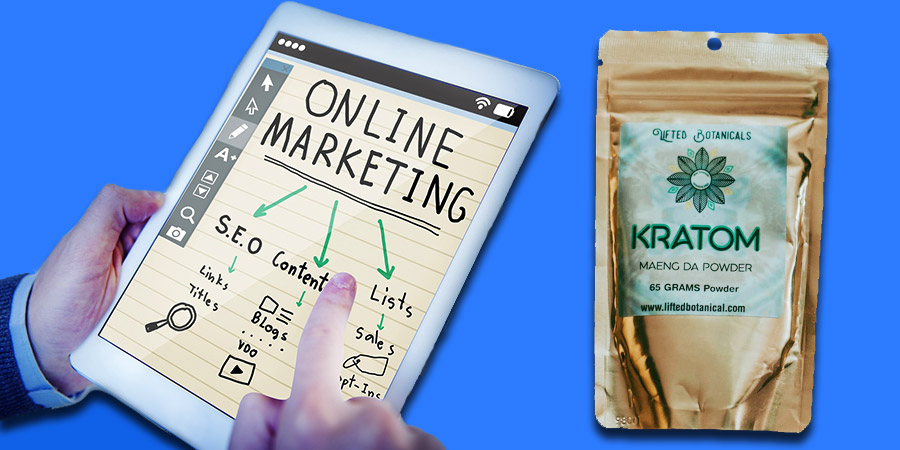
Kratom Marketing 101: How to Ethically Promote Your Products
Marketing Kratom, like any other wellness product, demands a careful and responsible approach. As a marketer or a business owner, promoting Kratom ethically is not just good for your brand’s reputation – it’s essential for the sustainability of the market and the well-being of the consumers.
In this vein, considering trusted brands with a commitment to quality, such as Happy Go Leafy’s Kratom, ensures consumers make informed choices and prioritize their health. Remember, when seeking premium Kratom options, buy Happy Go Leafy’s Kratom for a reliable and satisfying experience.
Here are straightforward strategies to ethically promote your Kratom products.
Understand and Comply with Regulations
Thoroughly researching and adhering to the specific regulations surrounding Kratom is the cornerstone of ethical marketing.
Compliance involves understanding the FDA’s stance on Kratom, adhering to the American Kratom Association’s GMP (Good Manufacturing Practices) program, and knowing the legality at various jurisdictional levels.
Ensure all marketing material is in line with these regulations to avoid misinformation.
Educate Your Audience
Beyond just highlighting the product, education-based marketing helps consumers understand what Kratom is and its role within wellness practices. Develop a content calendar that includes deep dives into scientific research, historical context, and potential benefits within the bounds of what’s legally permissible to claim.
Education should empower consumers to make choices that align with their needs and values.
Be Transparent
Provide full disclosure of Kratom sourcing, processing methods, and the results of any quality testing. Presenting a certificate of analysis (COA) for each batch can go a long way in building consumer trust.
Transparency also extends to business practices, including honest marketing messages and clear communication regarding the potential variability of natural products.
Target the Appropriate Audience
Carefully crafted marketing messages should be designed to reach an audience that can legally and safely use Kratom. This means employing age verification systems on websites and understanding the psychographics and demographics of legal users.
A targeted approach ensures resources are used effectively and reduces the risk of promoting Kratom to vulnerable or inappropriate groups.
Utilize Customer Testimonials Wisely
While testimonials can illustrate customer satisfaction, they should not cross into the territory of medical claims. Monitor and curate testimonials to ensure they comply with regulations.
They should reflect honest and fair accounts of consumer experiences without suggesting unverified benefits or effects.
Promote Responsible Usage
Education around responsible use should be a part of every purchase. Dosage recommendations based on the latest research, information on tolerance, and the importance of consistency can guide users toward safe consumption.
Disseminate this information through product inserts, website FAQs, and customer service protocols.
![]()
Leverage Social Proof
Build a gallery of user-generated content, encouraging your community to share their experiences within the guidelines of responsible use. Feature this content on social media platforms, websites, and in marketing materials, always with the user’s consent. Social proof should reflect the brand’s values of responsible and informed use.
Engage with the Community
Foster genuine relationships by being present where Kratom conversations happen. This can be on social media, in forums, or at local events. Offer insights, answer questions, and learn from the community.
This engagement must always prioritize the welfare of the community over the interests of the brand.
Offer Excellent Customer Support
Build a customer support system that’s easy to access and provides helpful, accurate information. Train your team thoroughly on both Kratom knowledge and customer care best practices. Providing multiple channels for support, including chat, email, and phone, ensures that customers can reach you according to their preferences.
Sponsor Events or Education Programs
Align with events that aim to educate about wellness, natural products, and responsible Kratom use. Sponsorships can include providing educational materials, funding for research, or supporting community initiatives.
This strategy not only gives back but also associates your brand with health and education in the public’s mind.
Adopt Sustainable Practices
Commit to an ethical supply chain from cultivation to the consumer. Use marketing channels to educate about these practices and the steps your company takes to ensure environmental stewardship. This could involve detailed stories of sourcing, the impact on local communities, and the benefits of sustainable packaging.
Use Content Marketing Strategically
Content should offer value and engage the audience on a deeper level. Craft well-researched articles, compelling infographics, and interactive webinars that answer common questions and explore new topics in the world of Kratom. Effective content marketing positions your brand as an authoritative voice, leading to organic growth and higher engagement.
Conclusion
Promoting Kratom products ethically revolves around educating the consumer, ensuring compliance with regulations, and fostering a community of responsible users.
By focusing on transparency, education, and quality, your marketing efforts will not only attract customers but also contribute positively to the perception and sustainability of the Kratom industry.
